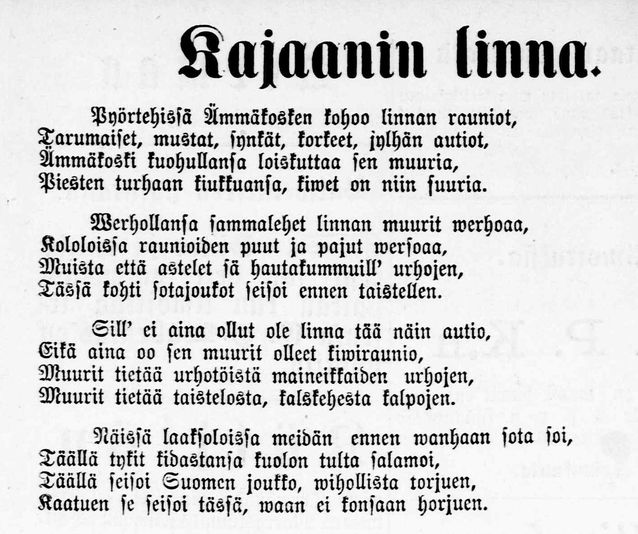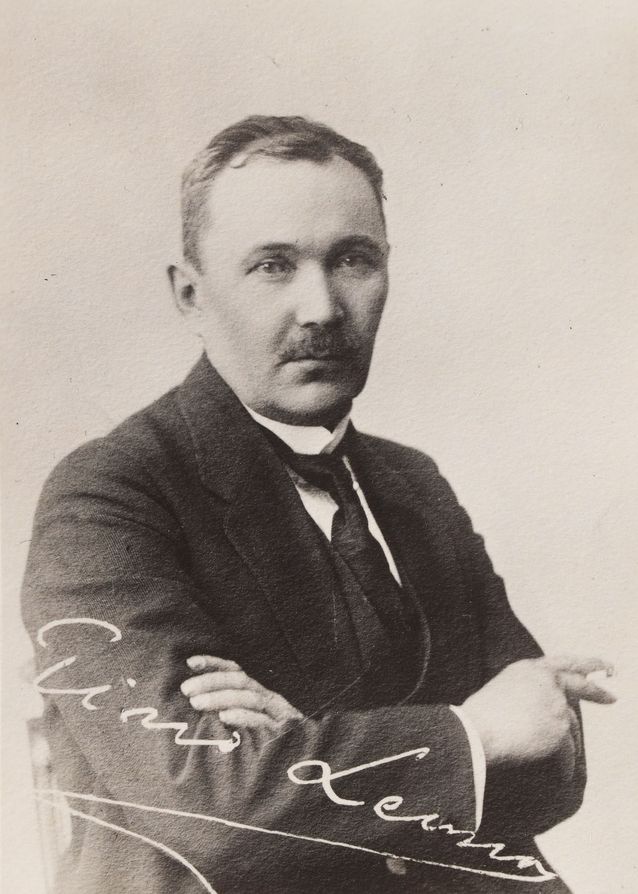Eino Leino
Armas Einar Leopold Lönnbohm (nom de plume Eino Leino)
Born July 6, 1878, Paltimo. Died January 10, 1926, Tuusula.
Latin studies, Imperial Alexander University, 1895-99
Poet, author, translator
Reporter, Nykyaika periodical, 1898-1899
Cultural sub-editor, Päivälehti newspaper, 1899-1904
Theatre Critic and columnist, Helsingin Sanomat newspaper, 1904-1914
Editor-in-chief, Sunnuntai newspaper, 1915-1918
Honours and memorials
Finnish State Prize for Literature, 1899-1900, 1902, 1904, 1907, 1908, 1911-1912, 1915-1918, 1920
Finnish State Writer’s Pension, 1918
Eino Leino society, 1947
Streets bearing his name: in Helsinki (1948), Hämeenlinna, Parikkala, Tuusula
Memorial Statue, the Esplanade in Helsinki, 1953
The Eino Leino Prize established, 1956
Memorial plaque for his translation of Divina Commedia, Rome, 1971
The Eino Leino Building, Paltaniemi, 1978
Eino Leino commemorative postage stamp, 1978
Memorial statue, Rantapuisto park, Kajaani, central Finland, 1980
Runon ja suven päivä (’Poem and summer day’), 6th June (flag day since 1992)
Photo: Suomalaisen Kirjallisuuden Seura
Written by Tomas Sjöblom
Translated by John Calton


